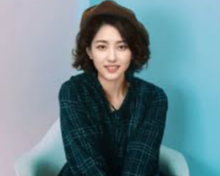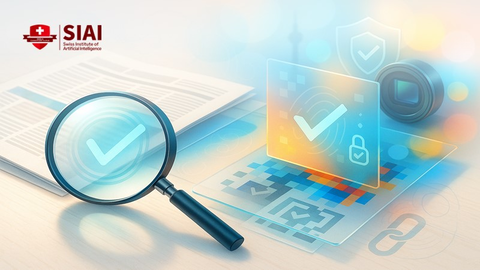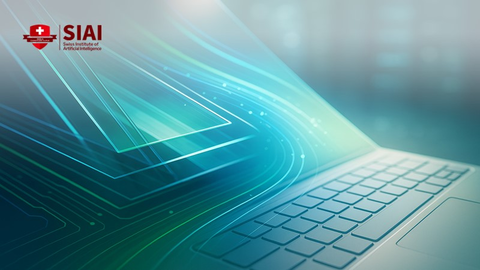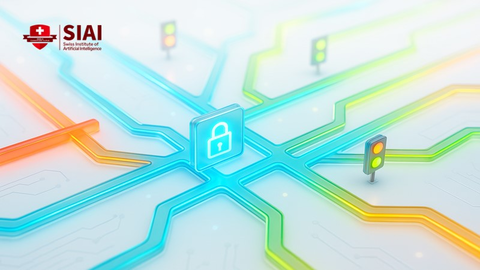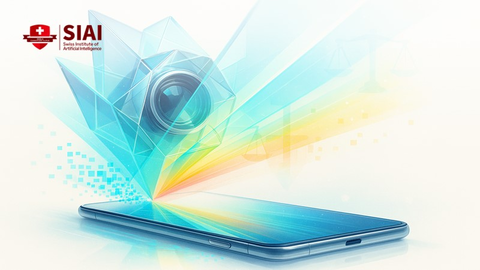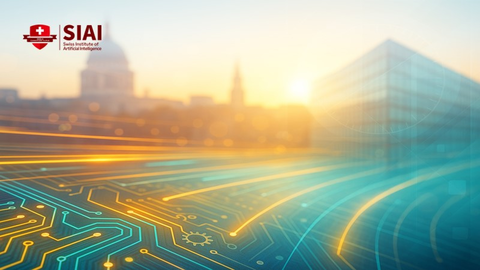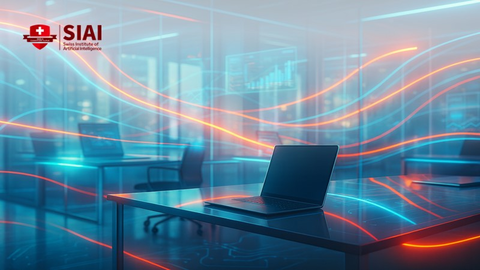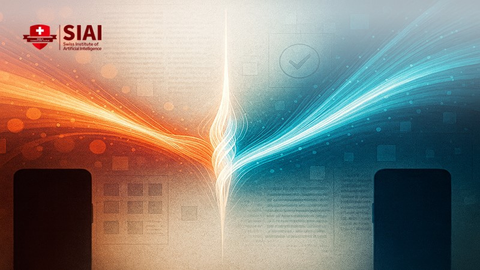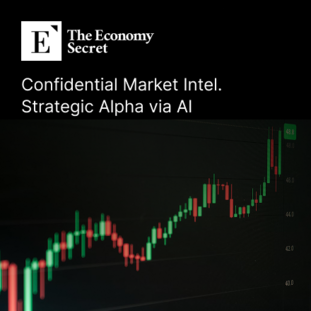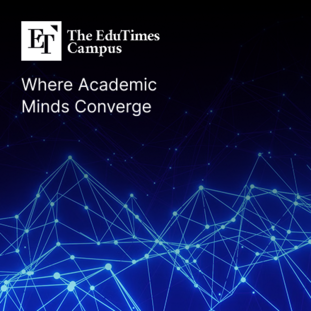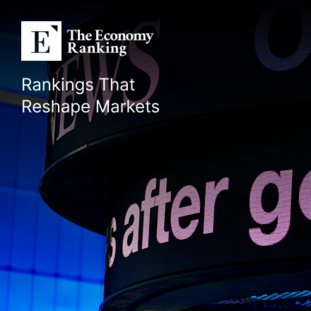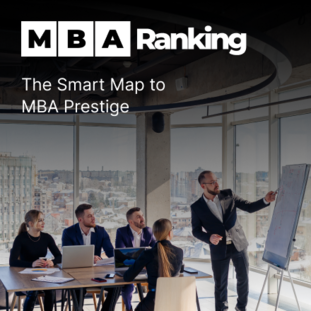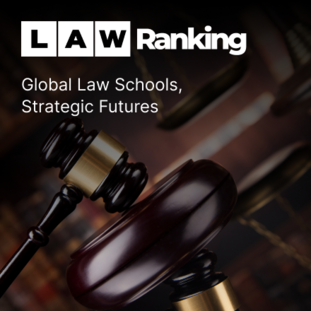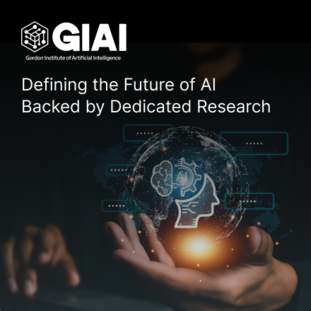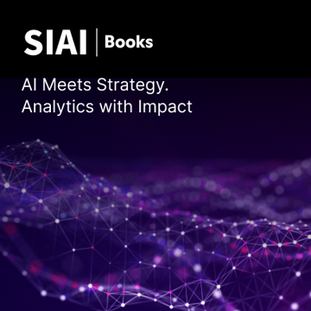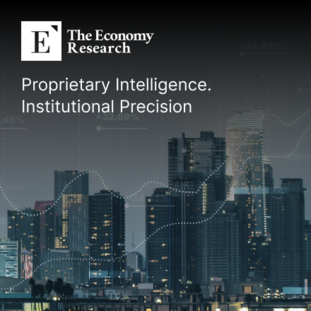[해외 DS] AI 불안 증폭하는 문화예술계, 멘탈 관리 어떻게 해야 할까
입력
수정
[해외DS]는 해외 유수의 데이터 사이언스 전문지들에서 전하는 업계 전문가들의 의견을 담았습니다. 저희 데이터 사이언스 경영 연구소 (GIAI R&D Korea)에서 영어 원문 공개 조건으로 콘텐츠 제휴가 진행 중입니다.

생성형 인공 지능의 급속한 발전으로 인해 업무의 미래와 인간의 창의성에 대한 큰 의문이 제기되고 있다. 인공지능이 인간을 능가하는 것처럼 보이는 뉴스가 끊임없이 쏟아져서 AI에 대한 두려움도 증가했다. 한 예로 독창성을 평가하는 실험에서 생성형 AI 프로그램이 평균적인 인간보다 높은 점수를 받았는데 AI가 평균적으로 인간보다 더 우세했다는 사실은 경종을 울린다.
AI의 한계를 잘 아는 전문가마저도 그 가능성이 놀라울 때가 있는데, 잘 모르는 일반 시민 혹은 일자리를 위협받는 사람에겐 커지는 AI의 존재감이 마냥 반갑지만은 않다. 미디어 심리학자들에 따르면 인공지능에 대한 불안을 겪고 있는 사람들이 기술의 한계와 장점을 이해하고, 삶의 긍정적인 동력으로 기술을 활용해야 막연한 두려움을 극복할 수 있다고 조언하고 있다.
밥그릇 건드는 생성형 AI, 영감의 원천으로 활용될 수도 있어
최근 인공지능과 가장 격렬히 부딪히고 있는 분야는 다름 아닌 창작 활동이다. 글과 그림 모두 자동 생성이 가능하기 때문에 영화, 연극, 애니메이션, 미술 등 가릴 것 없이 작가들의 원성이 자자하다. 아이러니하게도 인공지능이 가장 학습하기 어려울 것으로 생각됐던 창의력에서 가장 큰 논란이 발생하고 있는 현상의 뒷면엔 진정한 의미에서 창의적인 작업물이 많지 않다는 방증일 수도 있다. 물론 AI 프로그램으로 타인의 창작물을 무단 학습해서 이득을 취하는 일은 규제가 필요한 부분이지만 말이다. 하지만 잊지 말아야 할 사실은 기계학습은 결국 과거 데이터의 패턴 인식이라는 점이다. 머무르는 작가에겐 위기이지만, 계속 발전하는 작가에겐 더 높은 차원의 스토리텔링을 위해 시간을 벌 기회이기도 하다.
이러한 사실을 인지하고 아직 학생이거나 이제 막 사회에 진입한 작가들은 인공지능 프로그램을 다루는 일에 능해져야 한다. 프로그램으로 반복 작업 시간을 단축하고 남는 시간을 활용해서 창의적 사고를 위한 자기 계발 시간에 투자할 수 있다. 경력이 있는 작가들은 도메인 지식을 활용해서 AI 프로그램의 성능을 더 획기적으로 발전시킬 수도 있다. 인공지능 학회에서도 주목받는 논문들은 깊은 관찰을 통해 얻은 통찰을 바탕으로 이전에 시도하지 않았던 개념의 결합이 결실을 보는 경우들이 많다. 마찬가지로 경험 많은 작가가 역으로 개발자에게 도전적인 모델링 아이디어를 끊임없이 제안할 가능성이 열려 있다는 의미다. 모델을 개발한다는 것은 주어진 정보를 어떻게 조합할 것이냐는 물음과 맞닿아 있다. 창의적인 문체 혹은 문장의 조합 방법론을 끊임없이 연구한 작가의 지식은 획기적인 알고리즘 개발에 활용될 수 있다. 그 과정에서 작가도 인공지능의 학습 방식이나 대답으로 부터 영감을 얻을 수 있다는 사실을 간과해선 안된다.
최근 디즈니는 마블의 Secret Invasion 시리즈의 인트로를 메소드 스튜디오(시각효과 회사)를 통해 인공지능으로 제작했다고 전했다. 많은 작가들이 이에 실망하고 우려 섞인 반응을 보였지만 메소드 스튜디오가 개발한 기술을 활용해서 잠재력을 터뜨리고, 기존 시스템을 개선하는 데 기여할 신입과 경력 작가를 뽑지 않을 이유는 없을 것이다. 수많은 작가들이 있었기 때문에 ChatGPT와 DALLE가 탄생할 수 있었다. 당장의 저작권 침해 규제로 피해를 최소화하는 일도 중요하지만, 작가협회의 창작 집대성을 활용해서 알고리즘의 발전과 성숙을 어떻게 이끌어나갈 것인가에 대한 논의도 시급한 시점이다. 대규모언어모델의 복잡성 앞에서 학습 데이터의 저작권 식별 계획은 현실성이 없다. 작가들이 철학과 문화와 예술로 혁신적인 GPT-5를 만드는 주역이 되어서 인센티브를 나눠 갖는 방향이 오히려 현실적인 상생 전략이다.
휴식과 연대도 효과적인 스트레스 해소법
AI와 일터 그리고 자아에 대해서 고민하는 습관도 좋지만 전문가들은 주의를 환기하는 경험도 강조하고 있다. 가끔은 기술에서 벗어나 자연이나 사랑하는 사람들과 물리적 세계에서 다시 연결점을 찾는 것이 정신 건강에 중요하기 때문이다. 오프라인에서의 경험으로 챗봇이나 이미지 생성기와 인간이 무엇이 다른지 다시 한번 상기해야 한다. 수년간 인간의 창의성과 AI의 관계를 연구해 온 하버드 대학교 철학과 션 켈리(Sean Kelly) 교수는 지금까지 AI가 할 수 있는 것은 창의력과 창의적 동기를 모방하는 것뿐이라고 말한다. AI 모델이 무언가를 생성할 때는 예술가가 자신이 말해야 한다고 생각한 것을 표현하려고 노력하는 것과는 결이 다르다. 작품을 감상하는 우리는 작가의 숨겨진 메시지와 그런 의도를 가질 수밖에 없었던 맥락을 하나하나 알아가는 재미로 문화 활동을 즐기기 때문에 AI가 제공하는 가치의 한계도 명확하다.
연대를 통해 심리적인 안정을 찾는 사람들도 늘고 있다. 비슷한 처지에 놓인 사람들끼리 서로를 위로하고 다시 일어설 힘을 찾는다면 더할 나위 없는 해결책이다. 모임을 통해 AI 규제안에 대해 합리적인 논의를 펼치는 것도 사회 구성원으로서 의미 있는 일이고, 혼자서는 알아보기 어려웠던 새로운 기술에 관한 공부도 용기 내 시작해 볼 수도 있다. 현실에서 도피하지 않고 다 같이 어려움을 헤쳐 나가는 적극적인 도전 의식이 많은 불안을 잠재울 방법이다. 미래에 공상과학에서 나올 법한 더 복잡한 문제가 현실화한다면 연합하여 문제를 해결해 본 지금의 경험이 더욱 값지게 느껴질 것이다.
창작 활동을 하는 작가든 엑셀 시트를 작성하는 사무직이든 가장 중요한 본질은 바뀌지 않은 듯하다. 관중을 압도하고 감탄을 자아낸 촘촘한 작품 설계는 유일무이한 세계관을 형성할 것이고, 클라이언트의 기대보다 몇 발 더 나아가서 생각하고 더 나은 결과를 위해 계약 종료 직전까지 고민하는 직장인의 치열함은 대체 불가능한 인력으로 남을 것이기 때문이다. 아직 ChatGPT가 환각에 취해 있을 때, DALLE가 6개 손가락을 그려주고 있을 때, 놀란 마음을 진정시키고 각자의 자리에서 묵묵히 걸어 나가는 인간의 모습은 인공지능의 탄복도 자아내지 않을까? 서두에 언급했던 독창성 시험에서 가장 높은 점수를 기록한 주인공은 아직 인간이다.
‘AI Anxiety’ Is on the Rise—Here’s How to Manage It
Rapid advances in generative artificial intelligence have prompted big questions about the future of work and even human creativity. Experts have suggestions for how to manage all these unknowns
It’s logical for humans to feel anxious about artificial intelligence. After all, the news is constantly reeling off job after job at which the technology seems to outperform us. But humans aren’t yet headed for all-out replacement. And if you do suffer from so-called AI anxiety, there are ways to alleviate your fears and even reframe them into a motivating force for good.
In one recent example of generative AI’s achievements, AI programs outscored the average human in tasks requiring originality, as judged by human reviewers. For a study published this month in Scientific Reports, researchers gave 256 online participants 30 seconds to come up with imaginative uses for four commonplace objects: a box, a rope, a pencil and a candle. For example, a box might serve as a cat playhouse, a miniature theater or a time capsule. The researchers then gave the same task to three different large language models. To assess the creativity of these responses, the team used two methods: an automated program that assessed “semantic distance,” or relatedness between words and concepts, and six human reviewers that were trained to rank responses on their originality.
In both assessments, the highest-rated human ideas edged out the best of the AI responses—but the middle ground told a different story. The mean AI scores were significantly higher than the mean human scores. For instance, both the automated and human assessments ranked the response “cat playhouse” as less creative than a similar AI-generated response from GPT-4, “cat amusement park.” And people graded the lowest-scoring human answers as far less creative than the worst of the AI generations.
Headlines ensued, proclaiming that “AI chatbots already surpass average human in creativity” and “AI is already more creative than YOU.” The new study is the latest in a growing body of research that seems to portend generative AI outpacing the average human in many artistic and analytical realms—from photography competitions to scientific hypotheses.
It’s news such as this that has fed Kat Lyons’s fears about AI. Lyons is a Los Angeles–based background artist who works in animation and creates immersive settings for TV shows including Futurama and Disenchantment. In many ways, it’s their dream job—a paid outlet for their passion and skill in visual art, which they’ve been cultivating since age four. But some aspects of the dream have begun to sour: the rise of visual generative AI tools such as Midjourney and Stable Diffusion (and the entertainment industry’s eagerness to use them) has left Lyons discouraged, frustrated and anxious about their future in animation—and about artistic work in general. For instance, they were disheartened when Marvel and Disney decided to use an AI-generated, animated intro sequence made by the visual effects company Method Studios for the show Secret Invasion, which premiered in June. “It feels really scary,” Lyons says. “I honestly hate it.” Disney, which owns Marvel Studios, and Method Studios did not immediately respond to a request for comment.
Like many professional creatives, Lyons now worries about AI models—which need to train themselves on vast swaths of Internet content—stealing and rehashing their artistic work for others’ profit. And then there’s the corresponding loss of employment opportunities. More broadly, Lyons fears for the future of art itself in an era when honing a craft and a personal voice are no longer prerequisites for producing seemingly original and appealing projects. “I worked so hard for my artistic dreams. I’ve been drawing since I was in preschool,” they say. “This is always what I’ve wanted to do, but we might be entering a world where I have to give that up as my full-time job—where I have to go back to waiting tables or serving coffee.”
Lyons isn’t alone. Many people have found themselves newly anxious about the rapid rise of generative AI, says Mary Alvord, a practicing psychologist in the Washington, D.C., area. Alvord says her clients of all ages express concerns about artificial intelligence. Specific worries include a lack of protection for online data privacy, the prospect of job loss, the opportunity for students to cheat and even the possibility of overall human obsolescence. AI’s advance has triggered a vague but pervasive sense of general public unease, and for some individuals, it has become a significant source of stress.
As with any anxiety, it’s important to manage the emotion and avoid becoming overwhelmed. “A certain amount of anxiety helps motivate, but then too much anxiety paralyzes,” Alvord says. “There’s a balance to strike.” Here’s how some psychologists and other experts suggest tackling our AI fears.
First off, context is key, says Sanae Okamoto, a psychologist and behavioral scientist at the United Nations University–Maastricht Economic and Social Research Institute on Innovation and Technology in the Netherlands. She suggests keeping in mind that the present moment is far from the first time people have feared the rise of an unfamiliar technology. “Computer anxiety” and “technostress” date back decades, Okamoto notes. Before that, there was rampant worry over industrial automation. Past technological advances have led to big societal and economic shifts. Some fears materialized, and some jobs did disappear, but many of the worst sci-fi predictions did not come true.
“It’s natural and historical that we are afraid of any new technology,” says Jerri Lynn Hogg, a media psychologist and former president of the American Psychological Association’s Society for Media Psychology and Technology. But understanding the benefits of a new tech, learning how it works and getting training in how to use it productively can help—and that means going beyond the headlines.
Simone Grassini, one of the researchers of the new study and a psychologist at Norway’s University of Bergen, is quick to point out that “performing one specific task that is related to creative behavior doesn’t automatically translate to ‘AI can do creative jobs.’” The current technology is not truly producing new things but rather imitating or simulating what people can do, Grassini says. AI’s “cognitive architecture and our cognitive architecture are substantially different.” In the study, it’s possible the AI won high creativity ratings because its answers simply copied verbatim parts of a human creation contained somewhere in its training set, he explains. The AI was also competing against human volunteers who had no particular motivation to excel at their creative task and had never necessarily completed such an assignment before. Participants were recruited online and paid only about $2.50 for an estimated 13 minutes of work.
Confronting fears of generative AI by actually trying out the tools, seeing where and how they can be useful, reading up on how they work and understanding their limitations can turn the tech from a boogeyman into a potential asset, Hogg says. A deeper understanding can empower someone to advocate for meaningful job protections or policies that rein in potential downsides.
Alvord also emphasizes the importance of addressing the problem directly. “We talk about what actions you can take instead of sticking your head in the sand,” she says. Maybe that means gaining new skills to prepare for a career change or learning about ongoing efforts to regulate AI. Or maybe it means building a coalition with colleagues at work. Lyons says being involved with their union, the Animation Guild, has been crucial to helping them feel more secure and hopeful about the future. In this way, remedies for AI anxiety may be akin to ones for another major, burgeoning societal fear: climate anxiety.
Though there are obvious differences between the two phenomena (AI clearly offers some significant possible benefits), there are also apparent similarities. In tackling the biggest concerns about AI and in confronting the climate crisis, “we’re all in this challenge together,” Okamoto says. Just as with climate activism, she explains, meaningfully confronting fears over AI might begin with building solidarity, finding community and coming up with collective solutions.
Another way to feel better about AI is to avoid overly fixating on it, Okamoto adds. There is more to life than algorithms and screens. Taking breaks from technology to reconnect with nature or loved ones in the physical world is critical for mental health, she notes. Stepping away from tech can also provide a reminder of all the ways that humans are distinct from the chatbots or image generators that might threaten a person’s career or self-image. Humans, unlike AI, can experience the world directly and connect with one another about it.
When people create something, it’s often in response to their environment. Each word or brushstroke can carry meaning. For Lyons, human creativity is a “feral, primitive drive to make something because you can’t not make it.” So far, all AI can do is mimic that ability and creative motivation, says Sean Kelly, a Harvard University philosophy professor who has been examining the relationship between human creativity and AI for years. When an AI model generates something, Kelly says, “it’s not doing what the original artist did, which was trying to say something that they felt needed to be said.”
To Kelly, the real societal fear shouldn’t be that AI will get better or produce ever more interesting content. Instead he’s afraid “that we’ll give up on ourselves” and “just become satisfied” with what AI generators can provide.
Perhaps the better, and more characteristically human, response is to use our AI anxiety to propel us forward. Mastering a craft—be it drawing, writing, programming, translating, playing an instrument or composing mathematical proofs—and using that skill to create something new is “the most rewarding thing that we can possibly do,” Kelly says. So why not let AI motivate more creation instead of replace it? If the technology spits out something compelling, we can build on it. And if it doesn’t, then why worry about it at all?
